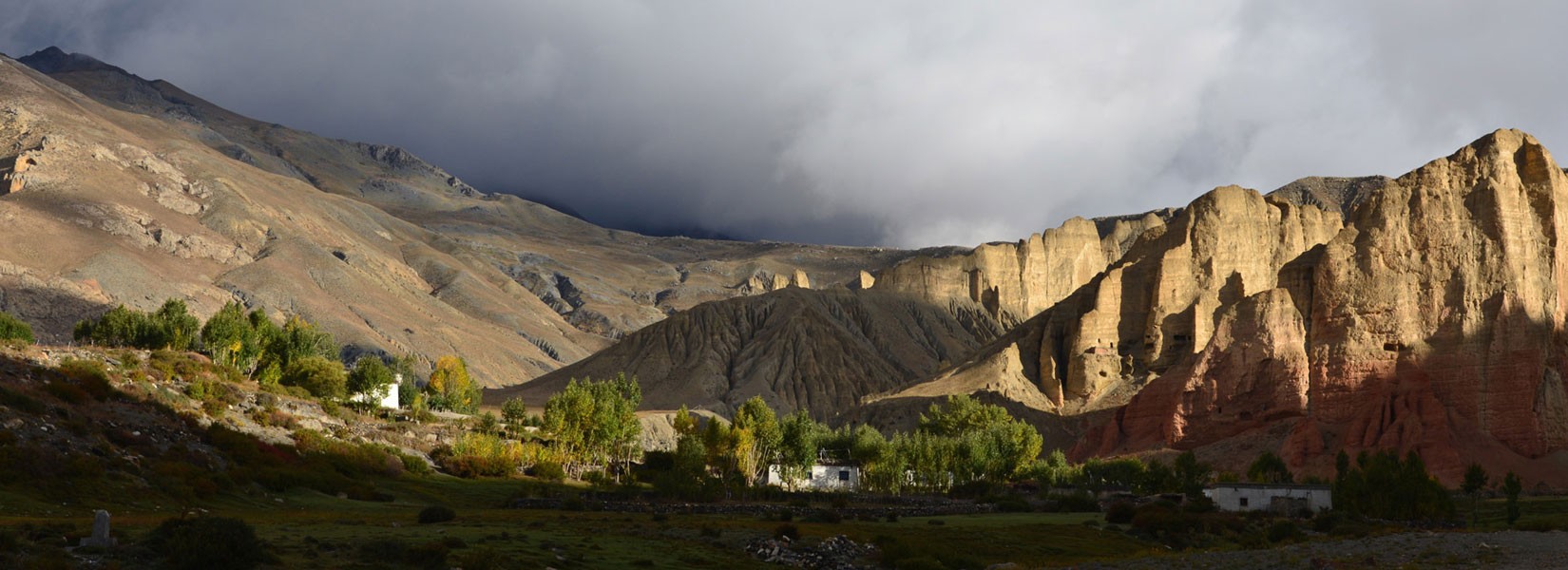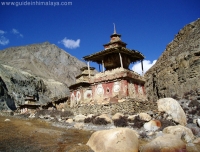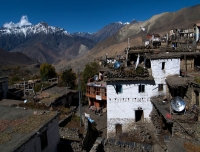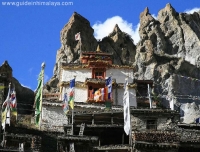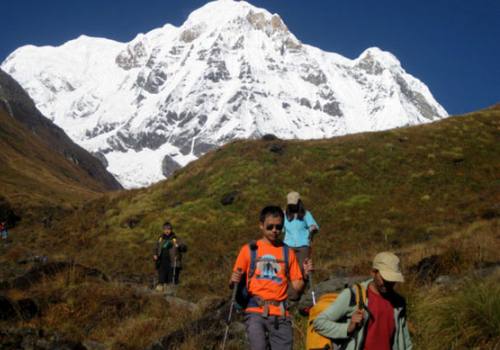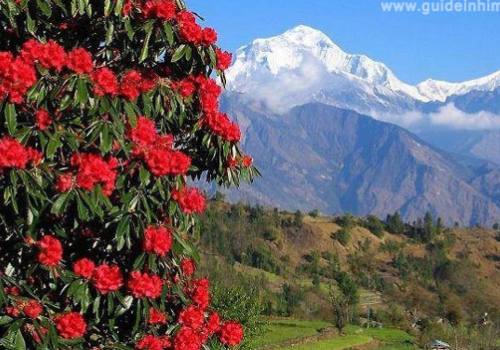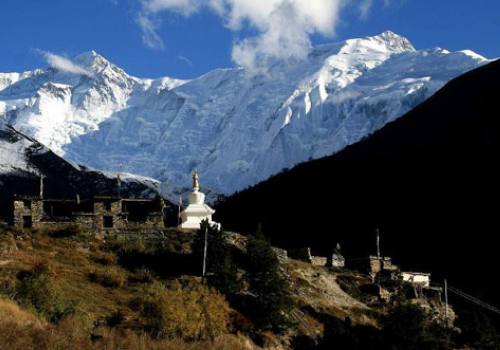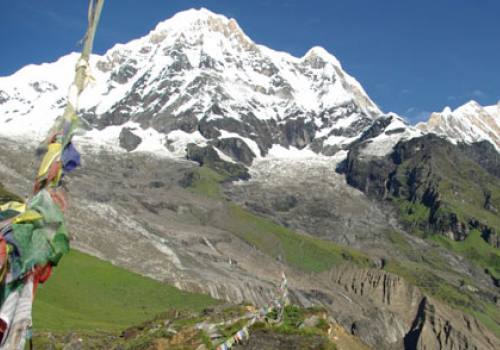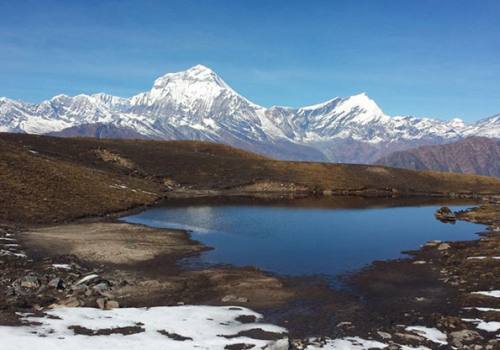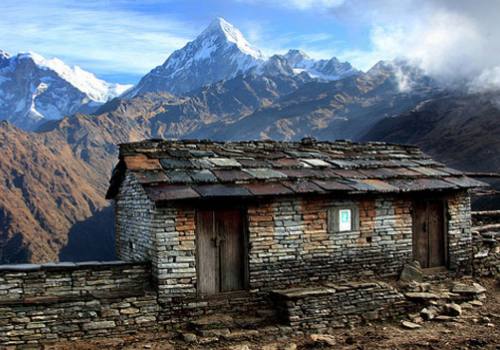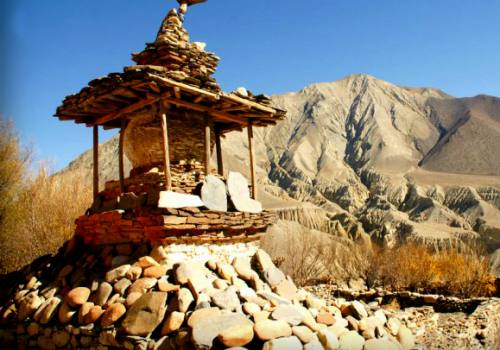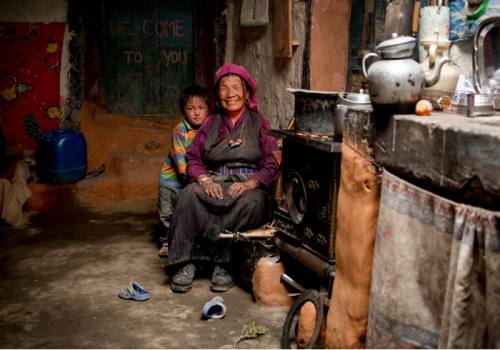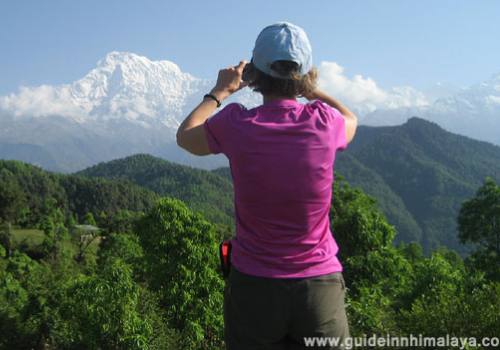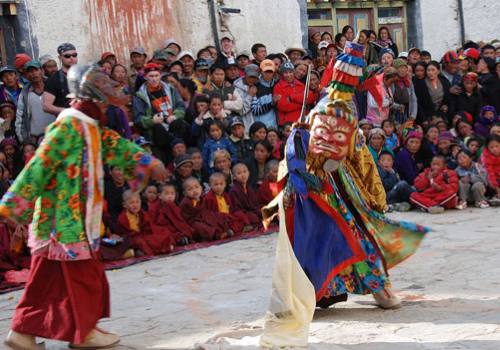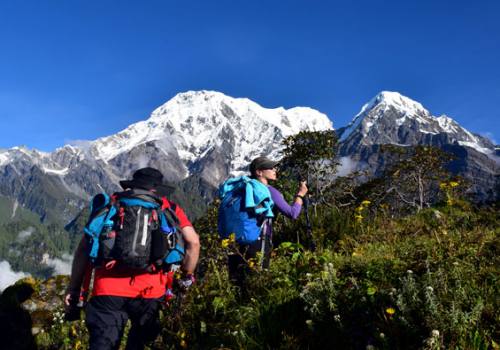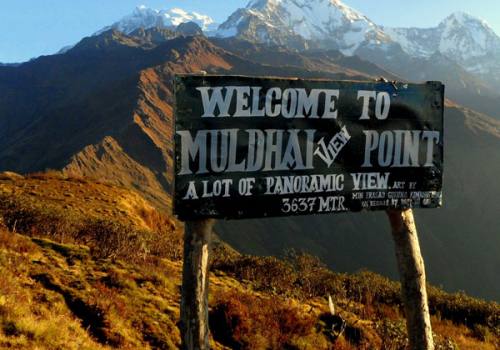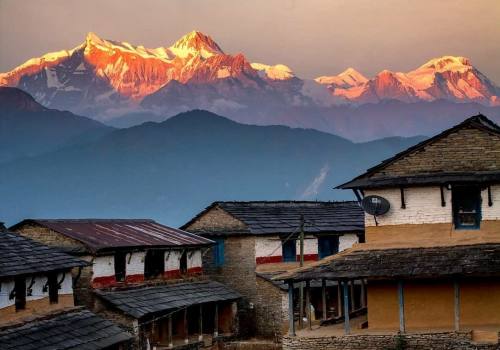Extreme Saribung Trekking and Peak Climbing
This Extreme Saribung Trekking and Peak Climbing is newly discovered trekking route in 2006. It is challenging and very popular trekking trail with beaten track and demanding pass. Saribung is situated in isolated part of Mustang region of Damodar Himal, close to the border of (Tibet). The trail is rugged, cutting high into cliff sides and passes villages that have changed little over the centuries. Saribung Trek can be done in anti-clockwise for which the trek start from Nar-Phu “a hidden valley” and then ascend to Saribung pass and enter in the Mustang " known as little Tibet in Nepal" and down to Jomsom or clockwise for which the trek start from Jomsom and follow Upper Mustang trail and descend to Nar-Phu valley and Besisahar to end.
For climbing Saribung peak, it is easy to do Expedition but there are many passes with ice and creases in between the Damodar Kunda region and Nar-Phu valley. The trek starts from one place to another with great sceneries, cultures, religion and geographical variations. And so trekkers can enjoy the fantastic and picturesque views of diversity in this region. Saribang trekking and expedition will start from one region and end another trekking region by enjoying scenery, religions, geographic elevation and will cross the challenging pass near Saribung Peak/6346m. The trekkers and climbers really enjoy its fantastic and pleasing views of Himalaya and beyond. During the trekking, trekkers meet different villages, monasteries, culture and religion of Tibetan style every day in Upper Mustang and Nar Phu area. The main important thing is spectacular mountain scenery, which will see from the top of Mt. Saribung. This trek will be trip of 21 day if we don’t climb Saribung Peak as per original we provided.
Itinerary
1 Day 01:Kathamndu to Pokhara.
2 Day 02:Fly to Jomsom and trek to Kagbeni (2800m); 3-4 hours walk.
3 Day 03:Trek from Kagbeni to Chele (3030m); 5-6 hours walk.
4 Day 04: Trek from Chele to Ghiling (3440m); 6-7 hours walk.
5 Day 05:Trek from Ghiling to Charang (3490m); 6-7 hours walk.
6 Day 06:Trek from Tsarang to Lo-Manthang (3740m); 5-7 hours walk.
7 Day 07:Acclimatization Day.
8 Day 08:Trek from Lo-Manthang to Yara (3900m); 6-7 hours walk.
9 Day 09:Trek to Luri Cave Monastery (4005m); 3-4 hours walk.
10 Day 10:Trek to Ghuma Thanti (4600m); 5-6 hours walk.
11 Day 11:Trek to Namta Khola (4890m); 7-8 hours walk.
13 Day 13: Acclimatization day.
14 Day 14:Trek to Camp I (5730m); 5-6 hours walk.
15 Day 15: Summit to Saribung Peak (6346m) and back to Base Camp (4950m); 8-9 hours,
16 Day 16:Trek to Nagoru (4400m) via Saribung Pass (6020m)
17 Day 17: Trek to Phu Gaon (4080m); 5-6 hours walk.
18 Day 18:Trek to Meta (3560m); 5-6 hours walk.
19 Day 19: Trek to Koto (2600m); 6-7 hours walk.
20 Day 20: Trek to Dharapani (1860m); 5-6 hours walk.
21 Day 21:Besi Sahar - Kathmandu
Cost Includes:
- Airport shuttles in Kathmandu airport.
- All meals: breakfast, lunch and dinner during the trek.
- Tea, coffee, cookies and hot water during the trek.
- Camping gears: Tents for guests, Nepalese staffs, Kitchen, Dining and toilet.
- Guide, cook, Sherpa and necessary porters and their salaries, insurance and equipment charge.
- Tented accommodation for all during the climbing period.
- All the domestic flights (Jomsom/Pokhara) and airport tax.
- All necessary trekking permits for Saribung Pass Trekking.
- Peak Climbing Permit, Garbage Deposit.
- Climbing Sherpa’s Equipment Charge and Insurance.
- All Ground transportation during the tour in Nepal.
- All Government taxes, vat and office Service charge.
Cost Excludes:
- Accommodation and meals in Kathmandu,
- Travel insurance, International air fare to and from Nepal.
- Nepal Tourist Visa fee, Items and expenses of personal nature.
- Any kind of alcoholic drinks, cold drinks, snacks, laundry, phone call, internet.
- Personal trekking equipments, Emergency Rescue evacuation in case of emergency.
- Any costs which arise due to a change of the itinerary, because of landslides, political disturbance, and strikes etc.
- Horse renting and additional porters during the trek, Tips for guide, porters, driver.
Dates & Prices
We are local tour and trekking operator based in Kathmandu so we guaranty small private group departures any dates that suits your date and time. Please kindly contact us for your customized departure date, itinerary and the price. Thank you and Namaste!
Useful Info
Note: This trip can be personalized as per your requirements that meet your time frame. The trip price will be according to Deluxe, Standard, Budget and group size so please kindly provide us your details for tailor made program.
- Trip Duration 21 Days
- DestinationNepal
- Trip Difficulty Challenging
- Trip StyleTrekking
- AccomodationLodge and Camping
- Transportation: Domestic Flight, Bus, Car
- Meals: Breakfast, Lunch and Dinner
- Max Person: 8 People
- Min Person: 2 People
- Best time to trek: August, Sept, Oct, April, May & June
- Max Elevation: 6020m
Need Help?
Please feel free to contact us. We will get back to you with 1-2 business days. Or just call us now
+977 9851042153 [email protected]